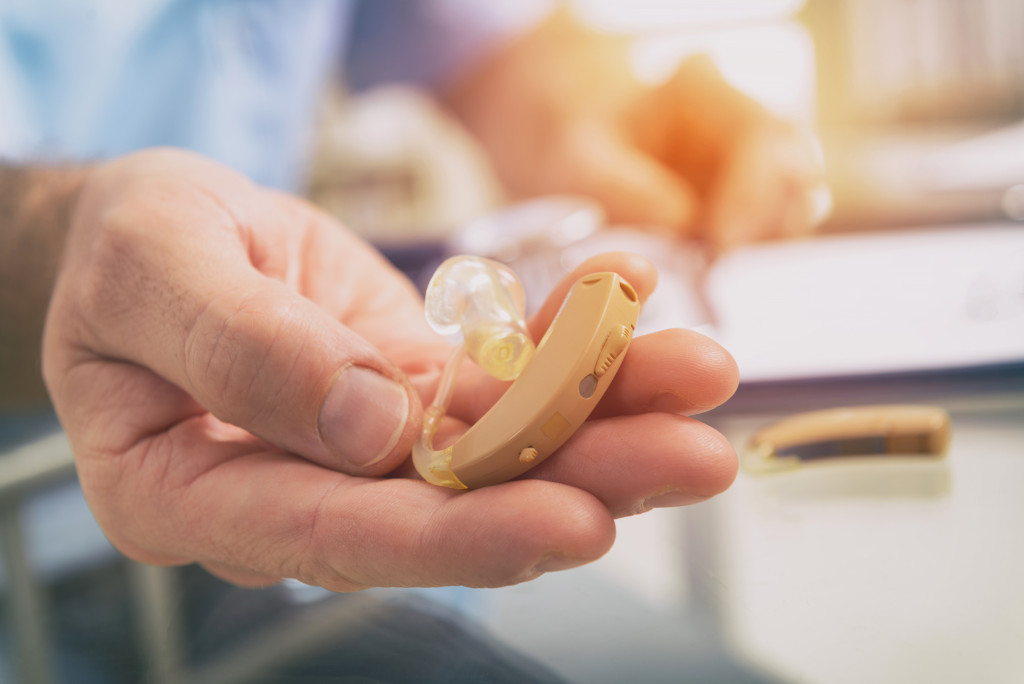- Lip reading apps use specialized algorithms to accurately identify spoken words and turn them into readable words or symbols.
- Sign language apps offer an efficient and convenient way for hearing-impaired people to comprehend what is said.
- Closed caption TVs and smart TV captions provide those who are hard of hearing with access to audio information.
- Hearing aids can help those with a hearing impairment perceive their environment better.
Technology has come a long way in aiding individuals with hearing impairments. From specialized hearing aids to cutting-edge apps, there are now many options available that can help people with hearing loss stay connected and engaged with the world around them. With these technological advancements, more people can enjoy their lives without feeling isolated due to their disabilities.
Digital Technology
Here are some digital technologies to help the hearing impaired:
Speech-to-text software
Speech-to-text software is an important advancement for the hearing impaired. This type of technology uses specialized algorithms to recognize spoken words and turn them into written words. It can be used to help people transcribe their speech, or it can be used as a tool for communication with others.
Hearing-impaired individuals can access communication that might have otherwise been inaccessible through this technology. Furthermore, speech recognition software helps reduce unnecessary barriers for those with disabilities, making them more likely to succeed in daily tasks.
Lip Reading Apps
Lip reading apps have become a cutting-edge technology in hearing aids. By completely digitizing lip-reading, these applications offer an efficient and accurate way for hearing-impaired people to comprehend what is being said. These apps are designed to accurately identify particular shapes made by human lips when speaking and translate them into readable words or symbols.
This makes communicating and understanding spoken language much easier for those with difficulty receiving sound signals. As such, lip read apps offer a safe and convenient method to facilitate communication with loved ones while making life a bit more accessible in the process.
Sign Language Apps
Sign language apps are a technological advancement that helps people with hearing impairment communicate more effectively. These apps allow users to learn basic sign language skills through interactive tutorials and various activities that enable them to communicate in common conversations.
What makes these apps even more revolutionary is their portability, as they can be accessed through mobile devices at any time, anywhere. With sign language becoming a more mainstream communication tool worldwide, these applications are opening up new communication channels for those who don’t have access to physical sign language classes or just prefer the convenience of learning at their own pace.
For the deaf and hard-of-hearing community, having access to technology like this can be life-changing and help bridge any communication gap between those with hearing impairments and the rest of society.
Closed Caption TVs and Smart TV Captions

Closed caption TVs and smart TV captions are a revolutionary technology that is helping to bridge the gap between hearing-impaired individuals and audio-heavy content. By integrating captions with television programming, those who are hard of hearing now have the opportunity to experience streaming services, shows, and news in real-time.
This newfound access eliminates the need for special equipment or additional tools to understand the content, bringing unprecedented freedom and autonomy to those who rely on captions. Beyond simply providing access to audio information, closed captioning can help boost literacy for children with hearing loss by allowing them to read along as they watch shows and movies. Its importance cannot be overstated – it is breaking down barriers that have made essential content inaccessible for far too long.
Hearing Aids

Hearing aids are one of the most important technologies developed to help people with hearing loss. These devices, worn behind or inside the ear, amplify sound entering the ear to be better heard and understood. They can often provide relief from tinnitus as well. These cutting-edge technology benefits children born with hearing impairments and adults dealing with age-related or other causes of hearing loss.
It offers a degree of independence and confidence to its users, allowing them to navigate everyday life with ease while still being able to hear clearly in conversations and educational settings. Hearing aids make significant progress in ensuring the freedom of expression for those suffering from complete or partial deafness by helping them perceive their environment more effectively. As such, they are invaluable tools in our society today.
Cochlear Implants
Cochlear implants are an incredible technological development that can have a transformative effect on people with hearing impairments. They are surgically implanted medical devices that partially restore lost hearing, allowing wearers to recognize sound and process spoken language.
These work by using electrodes to send electrical signals directly to the auditory nerve of the inner ear, stimulating it to generate a perception of sound (even complex ones). This technology opens up countless opportunities for those struggling with hearing loss: from being able to hear environmental sounds, understand speech more clearly, and even engage in conversations. It undoubtedly sets them up for greater engagement and inclusion within society.
These are just a few of the technological advances made to assist those with hearing impairments, and there is likely much more to come. As technology continues to evolve, so too will our ability to provide these individuals with options that allow them to lead fuller and richer lives.
